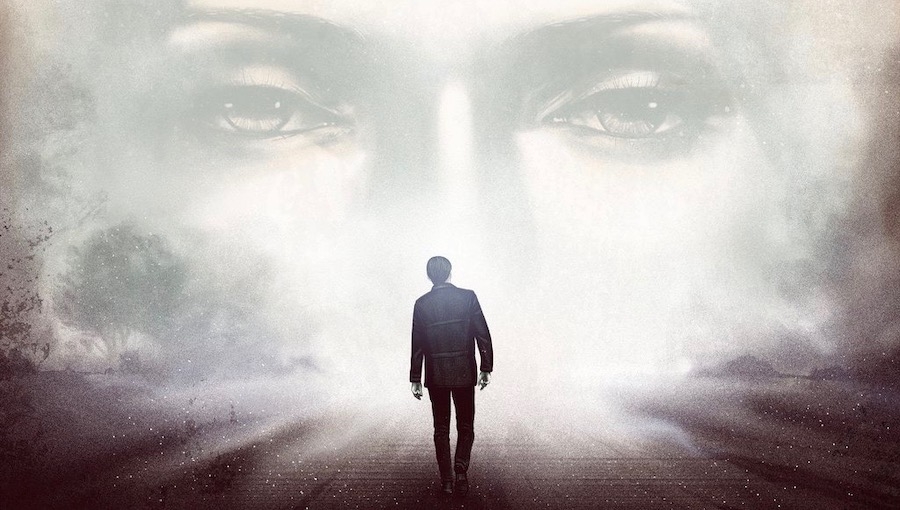As Halloween is fast approaching, the Fanbase Press staff and contributors decided that there was no better way to celebrate this horrifically haunting holiday than by sharing our favorite scary stories! Be they movies, TV shows, video games, novels, or any other form of entertainment, members of the Fanbase Press crew will be sharing their “scariest” stories each day leading up to Halloween. We hope that you will enjoy this sneak peek into the terrors that frighten Fanbase Press!
Somewhere along a forgotten road in New England sits the resort town of Silent Hill. A quaint, simple town that was once a bustling hotspot for tourists. Time has not been kind to the town, and now it’s all but abandoned. Every so often, someone stumbles into Silent Hill – sometimes on purpose, sometimes by accident – but, whatever the reason, they always find the town less inviting than they expected. When the fog rolls in and the sirens blare, Silent Hill reveals itself to be a purgatory comprised of our own sins. That’s the premise to one of the scariest games of all time.
Now, picture a teenage boy, circa 2008, browsing YouTube the night before Halloween. He finds a list of recommendations for scary games; most of them he’s heard of before. But one near the top of the list catches his attention: Silent Hill. That was the first time I had ever heard of the game that would become a defining staple of my tastes.
To this day, nothing has topped the psychological terror that the second game in the series was able to manifest. The game wasn’t about jump scares or gore; it was about being trapped in your own head, forced to face a world made from your worst traits. Every part was dripping with mystery, and, like a rotting onion, each layer peeled away revealed only something worse below.
SPOILERS AHEAD
Silent Hill 2’s story of James Sunderland on a quest to find his wife is brilliantly interwoven with tense gameplay that often relies on misdirecting the player. James’ mental state is constantly called into question, as characters contradict statements he’s made and even the inventory shifts to reveal holes in his memory. Reviewer Yahtzee Croshaw put it best when he said, “[As you play] it’s mostly just you, James, and a big, cold, haunted town. And after a while, you start to wonder which of the three is James’ biggest enemy.” Indeed, the player’s actions seem to be focused around forcing James through progressively worse and worse situations.
And that’s the point.
Most of why Silent Hill works lies with its hapless protagonist. While the story paints him as a good man trying to save his wife, the truth reveals itself in the third act: James killed his wife while she was dying of a terminal disease. The truth of the situation hit me like a ton of bricks the first time I played. In an instant, everything I’d encountered up until that point made perfect sense. James wasn’t trapped in some evil town, he was trapped by his own guilt. And that was so much scarier to me, because you can’t outrun guilt.
Nowhere is Silent Hill’s grim message better shown than in the monster designs. Some – like the Lying Figures, the Nurses, and Mary – represent the cold loneliness of the hospital James spent his days, waiting for the inevitable death of his partner. While others – like the Mannequin, Flesh Lips, and Mandarin – carried inescapable sexual undertones made perverse and hideous. All of them were physical manifestations of the emotions James carries with him.
And among them all is Pyramid Head. I could write an entire article just about the symbolism of this behemoth. Part grim reaper, part sexual frustration, part toxic masculinity, and all guilt, Pyramid Head is the ultimate culmination of James’ fears and, by extension, the player’s. Unlike some other monsters, Pyramid Head doesn’t need to scream or leap in the player’s face. He is a slow, constant hunter. His scariest moments for me were when I thought I was safe – checking my equipment or reading a note. Just as my attention dipped from the game, Pyramid Head would – announced only by the sound of his sword dragging on the ground – lumber into frame and launch himself at me.
Masahiro Ito, the monster designer for Silent Hill 2, originally designed Pyramid Head as a masked figure, but he was displeased with the initial designs. He added the geometric helmet to give the monster an inhuman silhouette and settled on a pyramid because the sharp angles implied the helmet was painful and unwieldy. The design is so iconic that many games (including a fair number of Silent Hill sequels) have tried to mimic the evocative nature of Pyramid Head’s design.
These monsters are complemented by the haunting soundtrack composed by Akira Yamaoka, which further enhances the theme of isolation the game sells itself on. Yamaoka’s music is understated and knows just when to slink into the background to give scares center stage. During moments of rest and even the few briefly uplifting moments, Yamaoka’s score swells to become something comforting, though always with that twinge of fear just around the edge.
Silent Hill 2 isn’t the sort of game to make you jump out of your seat. It’s the sort of fear that lingers in the back of your head – a primal fear connected with being human. Silent Hill isn’t a place filled with monsters. It’s all our weaknesses and flaws waiting to bubble to the surface. To this day, when I hear an air raid siren or the sound of metal on metal, I’m taken back to this game and reminded that real horror sticks with us and makes us confront something deep inside us.

